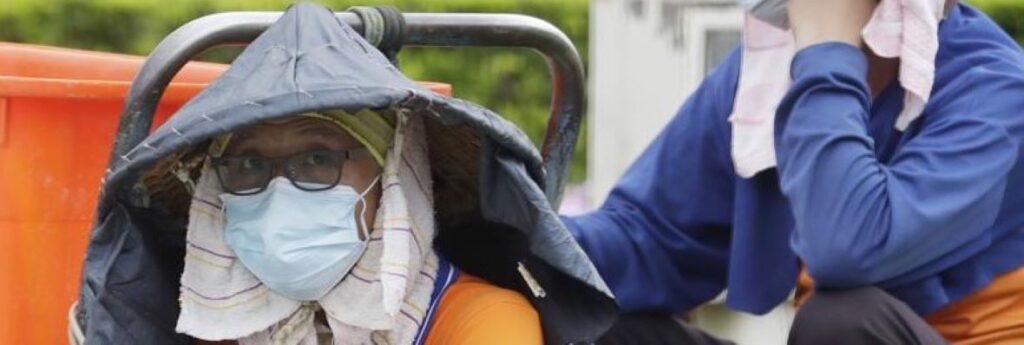Taiwan is now facing its worst outbreak since the beginning of the pandemic with over 11,000 new cases reported last Thursday alone, though officials say there is no need to panic. By contrast, Beijing has implemented greater restrictions and mass testing in an outbreak that saw 50 cases reported on the same day.
Cases in Taiwan have been on the upswing since late March. In April, the island’s central authorities announced that they would no longer maintain a “zero-COVID” policy like the Chinese government in which they would centrally quarantine positive cases. Instead, the government is asking people to quarantine at home if they test positive, unless they show moderate to severe symptoms.
Chen Shih-chung, the island’s health minister, announced Thursday they had found 11,353 new cases, along with two deaths. He said 99.7% of the cases in the current outbreak either had no symptoms or had mild symptoms.
Chin Siz-rong, a 24-year-old travel agent in Taipei, isn’t planning to take any extra precautions because he already got a booster COVID-19 vaccine and is used to wearing a mask. He said he switched to takeout when he eats out alone, but still will go to restaurants with friends.
“I already got three shots, and now everyone is saying its severity is like a cold. So I’m not too afraid for myself,” said Chin.
Most of Taiwan’s 858 COVID-19 deaths came from summer 2021. Until this month, it had been the island’s one major outbreak in the pandemic.
Taiwan has been relatively lucky throughout the pandemic, but also has maintained strict border controls with a two-week quarantine on arrival required for all visitors. Domestically, mask wearing is universal both outdoors and indoors. Masks are legally required on public transportation and in places like shops and theatres.
In the past few weeks, as cases have ratcheted up, people scrambled to buy up rapid tests with stores selling out in just a few hours. Still, officials urged the public to not panic, saying that Taiwan was better prepared with vaccines and ways to ensure moderate and severe cases would get prompt attention.
“We want to tell the public, from the medical world, please rest assured,” said Chiu Tai-yuan, a lawmaker who also heads the Taiwan Medical Association. “Last year’s outbreak situation is not like the one we face today.”
China
Meanwhile, in Beijing, more classes have been moved online in a further tightening of COVID-19 restrictions as China’s capital seeks to prevent a wider outbreak. The city of 21 million conducted three rounds of mass testing last week for the virus and closed down some communities where cases were found.
Beijing announced 50 new cases on Thursday, two of them asymptomatic, bringing its total in the latest wave of infections to around 150. Students make up more than 30% of total cases, with clusters linked to six schools and two kindergartens in Chaoyang.
Beijing has moved more swiftly than many Chinese cities to impose restrictions while case numbers remain low and the scale of the outbreak is still manageable.
The goal is to avoid the sort of sweeping measures imposed on Shanghai, where the highly transmissible omicron variant has torn through the city of 25 million. Restrictions confining many Shanghai residents to their homes are now in their fourth week and all schools have been online since last month.
The strict measures have spurred anger and frustration over shortages of food and basic supplies, the inability of hospitals to deal with other health emergencies and poor conditions at centralized quarantine sites where anyone who tests positive – or even has contact with a positive case – is required to be sent.
The National Health Commission reported 11,285 new cases across mainland China on Thursday, most of them asymptomatic and the vast majority in Shanghai, where an additional 47 deaths were reported.
Shanghai is seeking to achieve “societal zero COVID” whereby new cases are found only in people who are already under surveillance, such as in centralized quarantine, or among those considered to be close contacts. That would indicate chains of transmission in the open community have been severed, reducing the risk of new clusters forming from previously undetected sources.
While China’s overall vaccination rate stands at around 90%, just 62% of people over 60 have been vaccinated in Shanghai, the country’s largest and wealthiest city.

